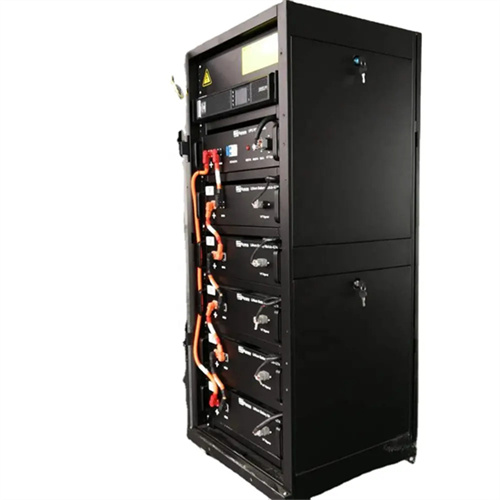Does the energy storage system need a heat exchanger

Thermal performance enhancement of energy storage systems
Different heat exchanger types were compared with WTHX. The numerical domains of these heat exchangers are shown in Fig. 2. These heat exchangers include: triple tube heat exchanger

1.7: Mechanisms of Heat Transfer
Just as interesting as the effects of heat transfer on a system are the methods by which it occurs. Whenever there is a temperature difference, heat transfer occurs. Collisions occurring at the contact surface tend to transfer energy from high

Thermal energy storage
OverviewThermal BatteryCategoriesElectric thermal storageSolar energy storagePumped-heat electricity storageSee alsoExternal links
A thermal energy battery is a physical structure used for the purpose of storing and releasing thermal energy. Such a thermal battery (a.k.a. TBat) allows energy available at one time to be temporarily stored and then released at another time. The basic principles involved in a thermal battery occur at the atomic level of matter, with energy being added to or taken from either a solid mass or a liquid volume which causes the substance''s temperature to change. Some thermal bat

HEAT EXCHANGERS FOR THERMAL ENERGY STORAGE: CHALLENGES AND MITIGATION
HEAT EXCHANGERS FOR THERMAL ENERGY STORAGE The ideal heat exchanger What are the requirements? • Big increase in exchanger enquiries for Long Duration, High Capacity

Thermal Storage: From Low-to-High-Temperature
Furthermore, latest results on component development for immersed heat exchanger and macroencapsulation for latent thermal energy storages are presented. Heat exchanger systems based on tubes and radiator

What is thermal energy storage? – 5 benefits you
What is thermal energy storage? Thermal energy storage means heating or cooling a medium to use the energy when needed later. In its simplest form, this could mean using a water tank for heat storage, where the water is heated at

Selection of a Heat Exchanger for a Small-Scale Liquid Air Energy
This paper presents the results of a theoretical analysis of a heat exchanger design for the challenging application of a small-scale modified Linde-Hampson cycle liquid air

Modelling and experimental validation of advanced
The heat transfer coefficient of a heat exchanger is easily affected by the heat flow rate (corresponding to the load rate of compression/power generation) while working on the off-design condition.

Unsteady analysis of the cold energy storage heat exchanger in
Renewable energy has attracted increasing attentions and developed rapidly [1], and it will need to grow more strongly in the future [2].However, the intermittently and volatility

HVAC Heat Exchangers Explained
A heat exchanger is exactly what the name implies, a device used to transfer (exchange) heat or thermal energy. Heat exchangers are either given a hot fluid to provide heating or a cold fluid to provide cooling. A fluid

What is thermal energy storage? – 5 benefits you must
Thermal energy storage means heating or cooling a medium to use the energy when needed later. In its simplest form, this could mean using a water tank for heat storage, where the water is heated at times when there is a lot of energy,

How Heat Recovery Systems Work | All You Need
On that note, a heat recovery ventilation system (HRV), aka, mechanical ventilation heat recovery system (MHVR), is basically an energy recovery ventilation system. It works between two sources at different

6 FAQs about [Does the energy storage system need a heat exchanger ]
How effective is a heat exchanger?
As mentioned in Section 2.5, the effectiveness of heat exchanger is usually regarded as an ideal value in previous studies, that is, it is set to be equal in energy storage and energy release phases and is not affected by other parameters.
What is thermal energy storage?
Thermal energy storage or thermal stores are vessels used to store excess heat generated from a domestic renewable heating system. A thermal store is a way of storing and managing renewable heat until it is needed. Heated water is usually stored in a large, well-insulated cylinder often called a buffer or accumulator tank.
How does a heat exchanger work?
For charging and discharging, a heat exchanger is immersed in the PCM and operated with a HTF. The performance of the storage is limited by the low thermal conductivity of the PCM, typically most limiting the discharge when solid PCM is in contact with the heat exchanging surfaces.
What are the different types of thermal energy storage?
The different kinds of thermal energy storage can be divided into three separate categories: sensible heat, latent heat, and thermo-chemical heat storage. Each of these has different advantages and disadvantages that determine their applications. Sensible heat storage (SHS) is the most straightforward method.
What are some sources of thermal energy for storage?
Other sources of thermal energy for storage include heat or cold produced with heat pumps from off-peak, lower cost electric power, a practice called peak shaving; heat from combined heat and power (CHP) power plants; heat produced by renewable electrical energy that exceeds grid demand and waste heat from industrial processes.
Why do we need a heat exchanger for PCM storage?
If a heat exchanger is embedded in the storage volume, pure PCM requires a very large heat transfer area resulting in high investment costs. The successful demonstration of direct steam generation in parabolic troughs gave rise to an increased demand for PCM storage.
Related Contents
- Does a photovoltaic power station need to be equipped with energy storage
- Energy storage system battery compartment heat dissipation
- Air energy heat pump energy storage system
- New Energy Storage Heat Bundle Tube
- Power system energy storage container heat dissipation
- Does the energy storage high-voltage box need a fan
- Do solar panels need energy storage cabinets
- Energy storage system test
- High voltage switch cabinet energy storage circuit diagram
- Home energy storage system design drawings
- Photovoltaic energy storage needs to be connected to the grid
- Photovoltaic Electrochemical Energy Storage Company